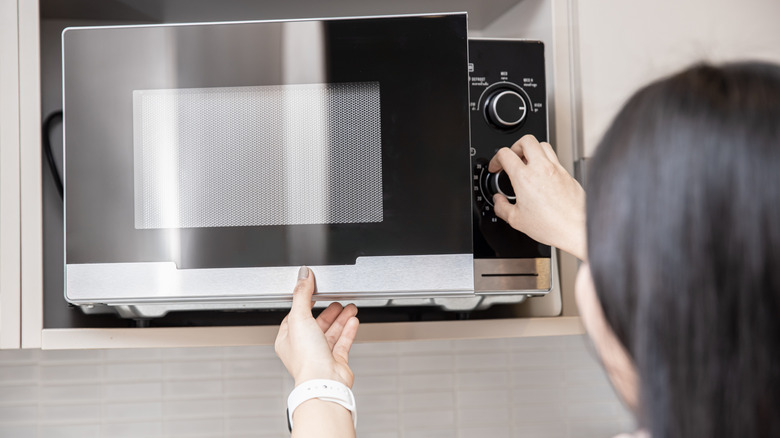There's One Button On Your Microwave That Will Change The Way You Use It Forever
Microwaves are one of the best inventions of the modern era. Sure, we might always question how they work, but the bottom line is they're quick and efficient when all we can think about is diving into those leftovers. If used properly, your microwave can cook almost anything — even pasta. But if you're not utilizing your microwave's power level button, then you're not getting the most out of this small appliance.
The power level button on the microwave is pretty self-explanatory; it adjusts the power level, which in turn adjusts how quickly your food cooks. To understand how power level buttons work, you have to understand that these appliances use electromagnetic waves called microwaves to quickly heat the water, fat, and sugar molecules in your food, which makes food hot in no time. Now, when you adjust the power level button, it alters how the microwaves are produced (powering on and off in intervals rather than constantly emitting microwaves), allowing the food to cook slower. The ultimate benefit here is that certain foods that need less aggressive heat, such as items like eggs and dairy products, have a much better texture when heated with less power.
Use your power level button to cook food less aggressively
At full power, your microwave is sending its microwaves through your food nonstop through 100% of the cook time. If you're heating up a delicate dish like eggs or trying to soften butter, you wouldn't cook it on full heat on your stove top, right? The same goes for the microwave. Say you adjust the power level button to 7, or 70%, to let your food cook. This means that the microwaves are taking intermittent breaks by starting and stopping as your food cooks, so they're only heating your food's molecules 70% of the time. The end result is a longer, gentler cooking process similarly to if you cooked something on a lower flame over the stove. In addition to eggs, the power level button is great for cooking foods like grains, defrosting frozen food, or softening butter.
When the power level is in use, the food doesn't stop cooking — that's due to residual heat. The heat that has already been transferred to your food continues heating the food in those spurts during which no microwaves are being emitted. Another benefit of the power level button is that it's not as easy to overcook your food, so you run a lower risk of burning the food or melting it too much. Even with lower power, still make sure you follow typical microwave rules and avoid putting any microwave-unsafe items in, such as Styrofoam.

